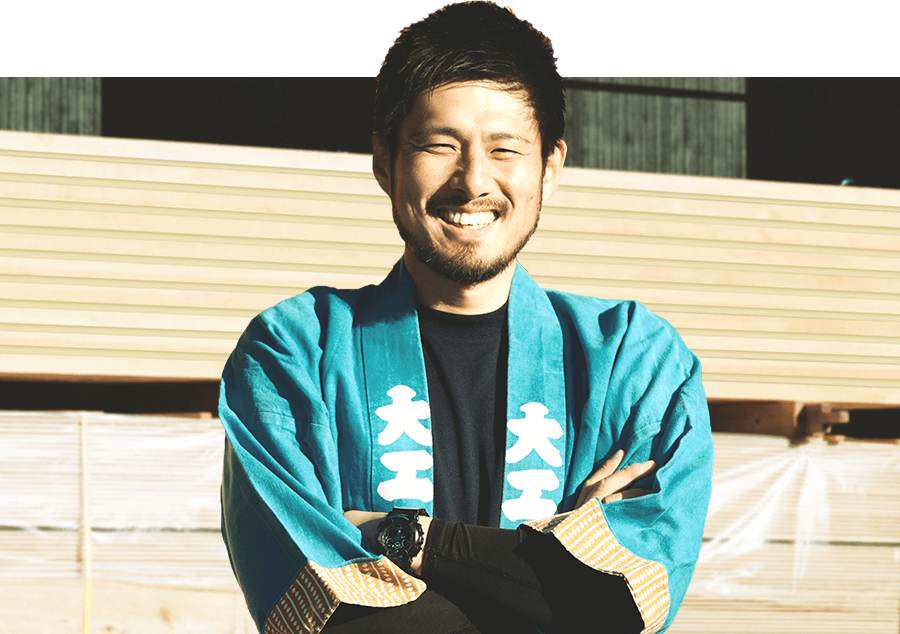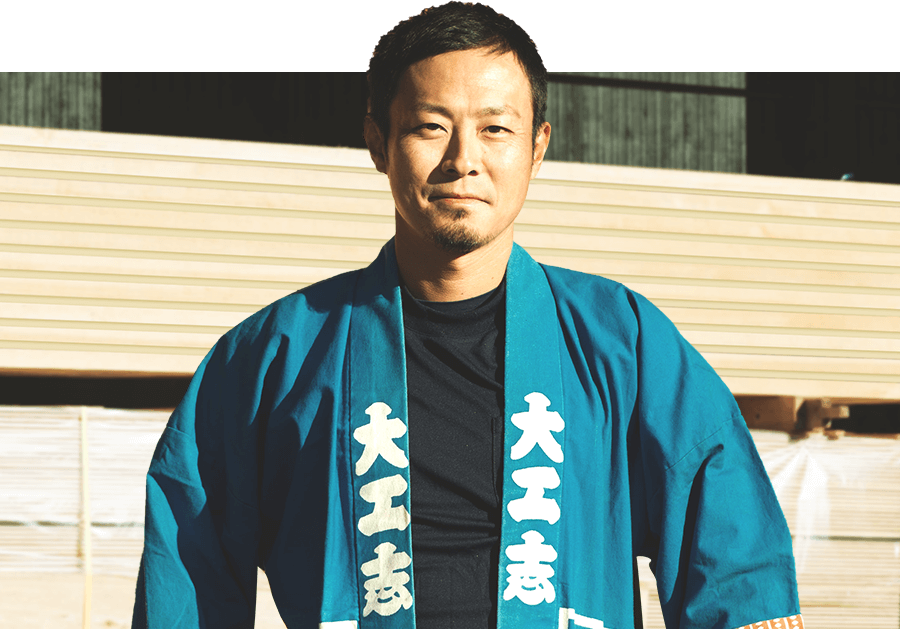Representative director Taku Ikeo
- Daikushi in the 2nd graduating class of Carpenters Training School
- Chairman of Japan Daikushi Carpenter’s Association
- Qualified architect of the 1st grade (Registration number 329026)
- Qualified technician of the 1st grade (Carpentry)
- Secretariat of certified NPO Japan Minka Revival Association, Kyushu-Okinawa region
- Organizer of Quality Builders Club (QBC), Kyushu region
Brief history
-
- 1982
- Born in Egawa-machi, Nagasaki-shi, Nagasaki prefecture
-
- 1997
- Graduated from Kogakura junior high school
Start thinking to be a carpenter.
-
- 2000
- Graduated from Nagasaki Higashi high school
Moved to Fukuoka prefecture.
-
- 2004
- Graduated from Department of Architecture, School of Engineering at Kyushu University
Graduation thesis: “Study on seismic performance of high strength RC frame”
-
- 2007
- Graduated from Carpenters Training School
Started working as a carpenter at Kenchikukoubou Yuuzansou.
-
- 2010
- Established Sumaikoubou Co., Ltd.
Director,
chief of construction division,
chief of farm division Ryouta Takiguchi
- Daikushi in the 2nd graduating class of Carpenters Training School
- Officer of Kyushu Daikushi Carpenter’s Association
- Qualified technician of the 1st grade (Carpentry)
Brief history
-
- 1981
- Born in Hakata-ku, Fukuoka-shi, Fukuoka prefecture
-
- 1997
- Graduated from Matsuzaki junior high school
-
- 2000
- Graduated from Higashi Fukuoka high school
Did nothing but playing soccer.
-
- 2004
- Graduated from Department of Architecture, School of Engineering at Kyushu Sangyo University
-
- 2007
- Graduated from Carpenters Training School
Started working as a carpenter at Umeno Construction Co., Ltd.
-
- 2010
- Established Sumaikoubou Co., Ltd.







